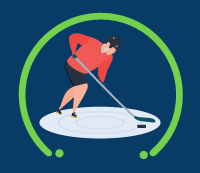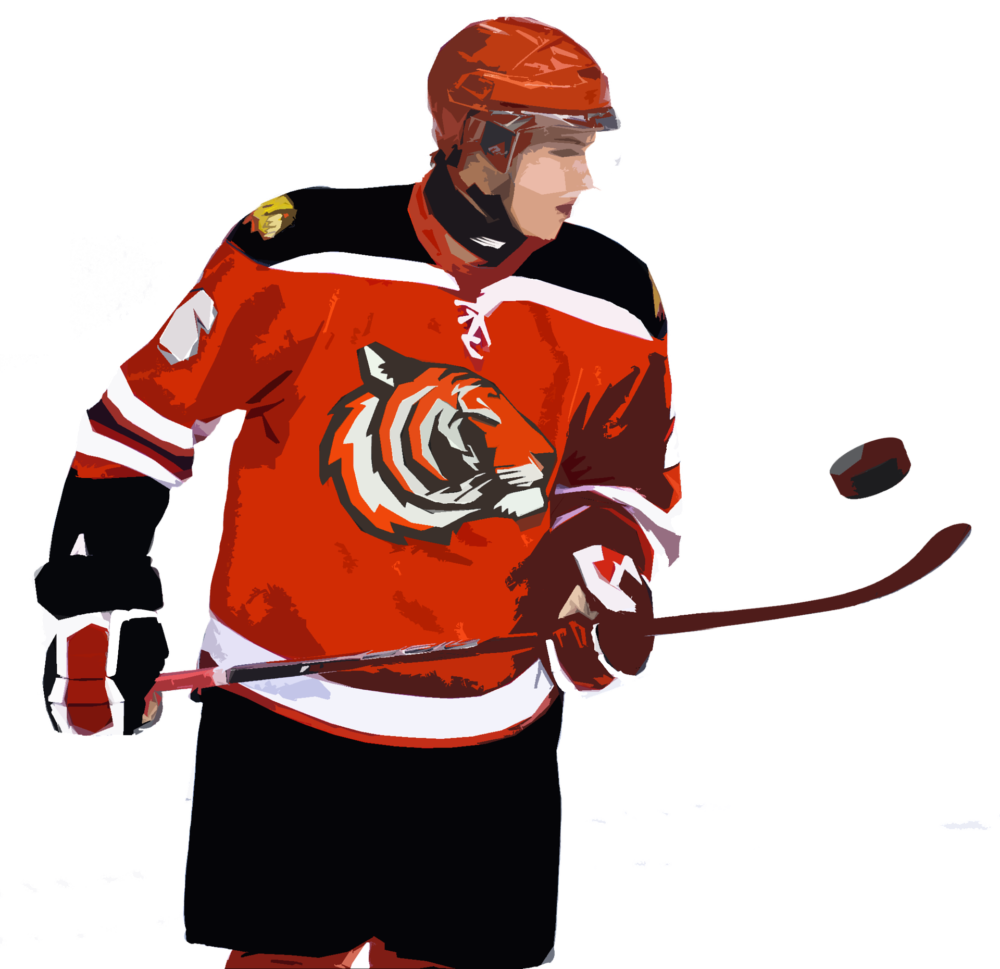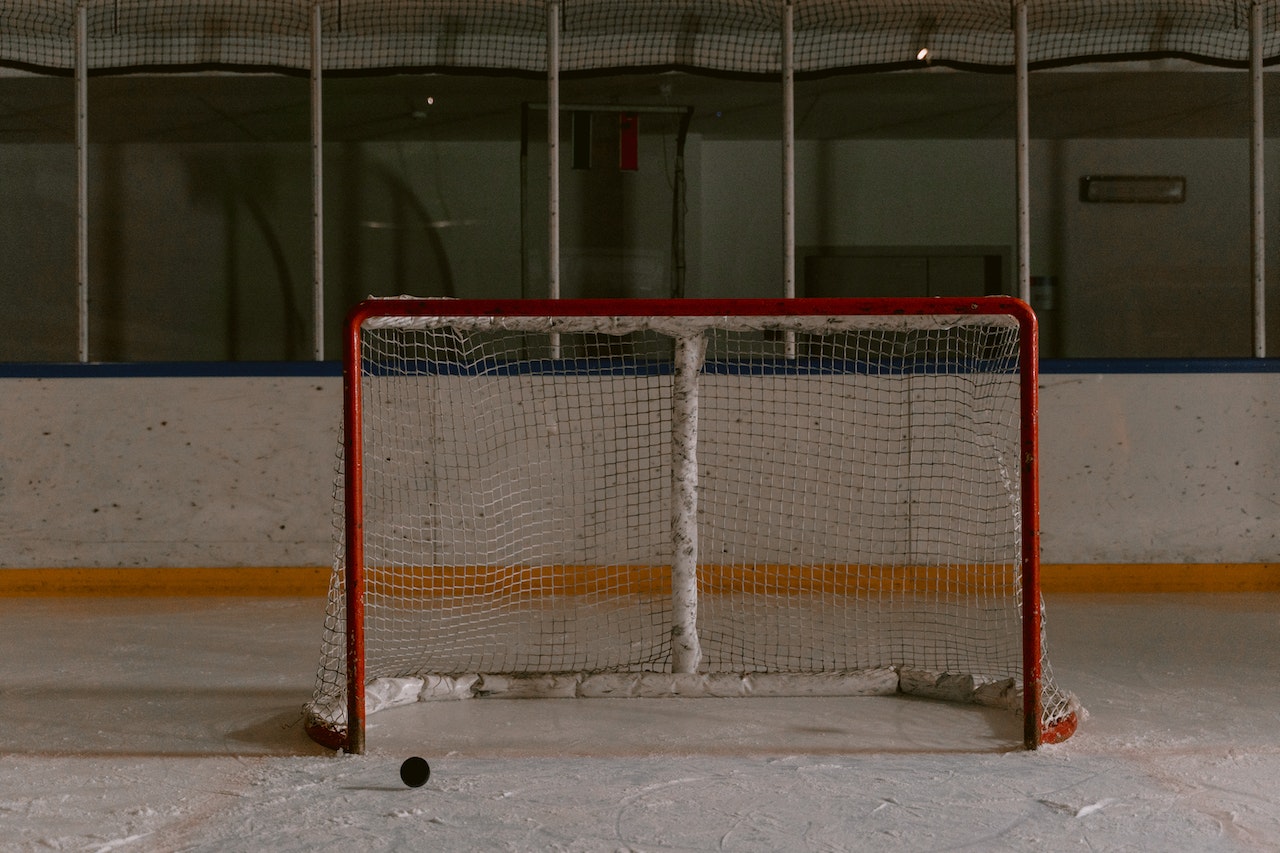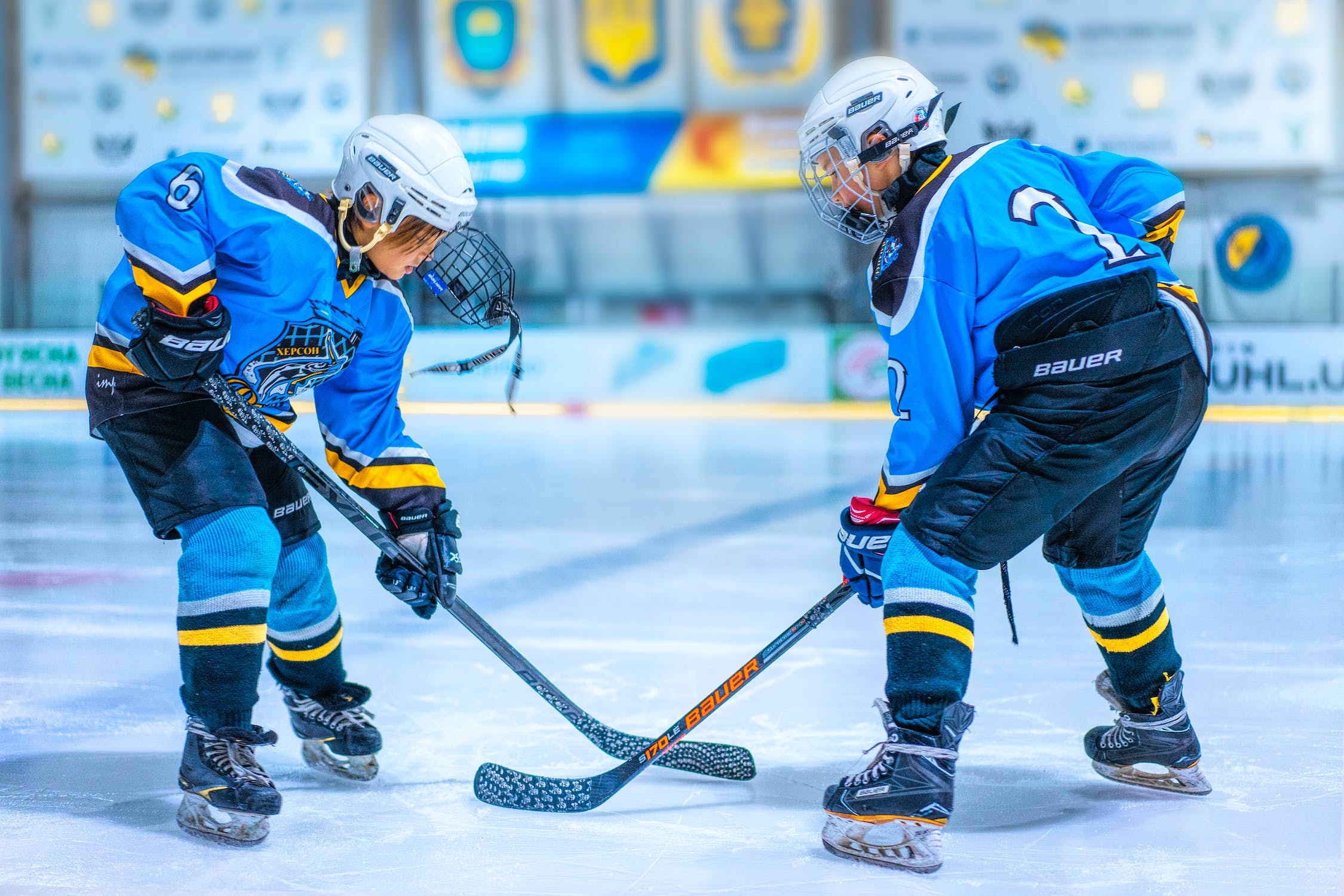Ice hockey is an exhilarating sport that demands a diverse skill set, with goaltending standing out as one of the most vital components. Embodying both a rewarding and challenging position, a goalie must possess technical prowess and mental resilience. A competent goaltender has the power to alter the course of a game, defending their team’s lead by skillfully blocking shots. As such, the role is widely regarded as the most significant on the ice.
Throughout the course of this blog, we will delve into essential and advanced goaltending techniques, underscore the importance of appropriate equipment, discuss mental preparation and mindset, share valuable goaltending tips, and suggest effective drills and practice routines to aid goaltenders in honing their skills and achieving success.
Essential Goaltending Techniques
The following are the important goaltending techniques that a goalie must possess:
Stance
The stance is the foundation of goaltending, as it sets the stage for all other techniques. A proper stance allows goaltenders to move quickly and efficiently, covering the most space in the crease while maintaining balance and stability. The elements of a practical stance include a balanced and stable base, with knees bent and feet shoulder-width apart. The upper body should be forward and square to the shooter, with hands held in front of the body for protecting the five-hole.
Angles and positioning
Angle play is important for goaltending success. By properly positioning themselves in the crease, goalies can effectively cut off angles, leaving fewer openings for the shooter to target. Proper positioning also allows them to anticipate shots and quick reactions to them. Some tips for optimal positioning include staying on the goal line when the puck is in the corner, maintaining depth in the crease, and being aware of the position and body language of the shooter.
Saves
Goaltenders must master a range of save techniques to be effective on the ice. These techniques include:
- The butterfly, in which the goaltender drops to their knees and spreads their pads for covering the lower part of the net.
- The glove save, where the goaltender catches the puck with their glove hand.
- The blocker save is where the goaltender deflects the puck away from the net with their blocker.
- For improving save technique and consistency, goaltenders should focus on proper hand placement, quick and efficient movements, and following through on their saves.
Understand how hockey goal dimensions set the standard for goaltending techniques in our detailed guide.
Advanced Goaltending Techniques
Puck handling and passing
A goalie’s puck-handling skills are important, as with the help of these skills they can control the puck and initiate plays. Goaltenders should focus on improving their stickhandling abilities, their passing accuracy, and speed as it will make them quick on the ice.
Tips for improving puck handling and passing include
- Regular practice
- Developing a strong understanding of the game and the positions of teammates and opponents
- Taking calculated risks when moving the puck.
Rebound control
Controlling rebounds is a vital component of successful goaltending. By effectively managing rebounds, goaltenders can limit second chances for the opponents and maintain control of the puck. Strategies for rebound control include
- Directing rebounds to safe areas of the ice,
- Using quick and efficient movements to reset after a save,
- Maintaining proper positioning in the crease.
One way to improve rebound control is to practice making saves while staying in a low, balanced position. When you make a save, make sure to keep your body square to the shooter and direct the rebound away from the net.
You must communicate with your defensemen so that they can know where you plan to direct the rebound, so they can prepare to retrieve it.
Developing a strong foundation in goaltending requires mastering essential techniques and progressively incorporating advanced skills. The table below outlines key goaltending techniques for every aspiring goaltender to conquer the crease.
| Technique | Category | Skill Level | Description |
|---|---|---|---|
| Stance | Essential | Beginner | Proper posture and balance, with knees bent, chest up, gloves in front and stick on the ice. |
| Butterfly Save | Essential | Intermediate | Dropping to knees with pads facing forward, sealing the ice and covering the lower portion of the net. |
| Angle Play | Essential | Intermediate | Positioning to square off to the shooter, maximizing coverage and minimizing open net space. |
| Puck Tracking | Essential | Advanced | Following the puck with eyes and body, making necessary adjustments to maintain optimal positioning. |
| Rebound Control | Essential | Intermediate | Directing shots to safe areas, using pads and gloves to minimize scoring opportunities. |
| Reverse-VH (Vertical-Horizontal) | Advanced | Advanced | A post-integration technique for covering short-side plays, with the pad on the ice sealing the post and the other leg in a horizontal position. |
| Active Hands | Advanced | Advanced | Using hands to actively make saves, particularly on high shots, and to control rebounds. |
| Screens & Deflections | Advanced | Advanced | Anticipating and reacting to shots through traffic and redirecting shots, while maintaining positioning. |
Reading the play and anticipation
As a goaltender, you must be able to interpret the play and foresee your opponent’s moves. This can help you position yourself correctly and make saves more efficiently. For developing this skill, you must study the game and understand the tendencies of different players and teams.
During games, pay close attention to the movements of opponents and anticipate their next move. Practice tracking the puck by following it with your eyes and adjusting your positioning accordingly. You can also watch game footage of your opponents for studying their playing style and developing a better understanding of their way to move and shoot the puck.
Essential Goaltending Equipment and Its Importance
The equipment worn by goaltenders is specifically designed for their protection from the high-velocity shots and physical contact faced during a game. The essential equipment includes a mask, chest protector, leg pads, gloves, and a blocker. A goalie stick and skates are also required.
The mask is the most crucial piece of equipment, for protecting the goalie’s head and face from injury. The chest protector and leg pads protect the torso and legs, respectively, while the glove and blocker are used to make saves.
| Equipment | Function | Importance |
|---|---|---|
| Leg Pads | Protect legs and provide mobility | Allow goaltenders to make saves and move quickly in the crease. |
| Blocker | Protect the stick hand and direct rebounds | Redirect shots to safe areas and reduce scoring chances. |
| Catching Glove | Catch pucks and protect the hand | Secure the puck to prevent rebounds and protect the hand from injury. |
| Chest Protector | Protect the torso and shoulders | Absorb the impact of shots, reducing injury risk and allowing the goaltender to focus on making saves. |
| Helmet & Cage | Protect the head and face | Provide vital protection for the goaltender's face and head, ensuring safety and visibility. |
Tips for Selecting and Maintaining Goaltending Gear
When selecting goaltending gear, it is important to prioritize safety and performance. It is essential to choose properly fitted gear, as ill-fitting gear can impair mobility and increase the risk of injury. It is also essential to select gear that provides adequate protection while not being too heavy.
Maintaining gear is equally important to ensure that it remains in good condition and offers the necessary protection. It is important to inspect gear regularly and replace any damaged or worn pieces. After each use dry your gear thoroughly and store it in a well-ventilated area will help in preventing bacteria growth and extend the life of the gear.
| Equipment | Function | Importance |
|---|---|---|
| Leg Pads | Protect legs and provide mobility | Allow goaltenders to make saves and move quickly in the crease. |
| Blocker | Protect the stick hand and direct rebounds | Redirect shots to safe areas and reduce scoring chances. |
| Catching Glove | Catch pucks and protect the hand | Secure the puck to prevent rebounds and protect the hand from injury. |
| Chest Protector | Protect the torso and shoulders | Absorb the impact of shots, reducing injury risk and allowing the goaltender to focus on making saves. |
| Helmet & Cage | Protect the head and face | Provide vital protection for the goaltender's face and head, ensuring safety and visibility. |
Mental Preparation and Mindset
Importance of Mental Preparation and Mindset
Goaltending is both a mental and physical game. Successful goaltenders must develop mental toughness, focus, and confidence in their abilities. Mental preparation is essential to achieving this mindset, and it begins well before stepping onto the ice.
Pre-game mental preparation can involve visualization exercises, goal-setting, and positive self-talk. Developing a routine can also help goaltenders get into the right mindset for a game. This routine can include specific warm-up exercises, meditation or breathing exercises, and mental imagery.
Tips for Developing Mental Toughness, Focus, and Confidence
Developing mental toughness, focus, and confidence takes time and practice. One effective strategy is to break down goals into smaller, achievable steps. Celebrating each small victory can help build confidence and motivation.
Developing a growth mindset is very crucial, which means viewing challenges as opportunities to learn and improve. Practicing mindfulness can help goaltenders stay present and focused during a game, rather than dwelling on past mistakes or worrying about the future.
Goaltending Drills and Practice Routines
Regular practice and focused drills are essential for improving goaltending skills. As a goaltender, it is important to have a routine targeting different skills, like agility, quickness, and reaction time. Here are some effective drills and practice routines that can help you in improving your goaltending skills.
Skating Drills
Skating is a vital aspect of goaltending. One must practice skating drills as they help in improving your agility, balance, and overall skating ability. Some effective skating drills include the T-Push Drill, the Shuffle Drill, and the Reverse VH Drill.
Reaction Time Drills
Goaltenders need to have quick reflexes and reaction time to make saves. Reaction time drills can help you improve your response time to different situations. Some effective reaction time drills include the Screen Drill, the One-Timer Drill, and the Pass Across Drill.
Puck Control Drills
Goaltenders need good puck control because it allows them to move the puck efficiently and start the team’s offensive play. Some effective puck control drills include the Goalie Stickhandling Drill, the Passing Drill, and the Puck Retrieval Drill.
Save Technique Drills
Improving your save technique is essential for goaltending success. Some effective save technique drills include the Butterfly Drill, the Glove Hand Drill, and the Blocker Hand Drill.
Enhancing your goaltending skills requires consistent practice and effective drills. Below is a table outlining essential goaltending drills and practice routines designed to refine various aspects of your game and elevate your performance in the crease:
| Drill / Routine | Focus Area | Description |
|---|---|---|
| Crease Movement | Skating | T-pushes and shuffles in a square or triangle pattern, focusing on balance and quick movements. |
| Breakaway Saves | Positioning | Practicing poke checks, pad stacks, and butterfly slides to stop breakaway attempts. |
| Post-to-Post Slides | Post Coverage | Sliding between posts using the VH or Reverse-VH techniques, maintaining tight post coverage. |
| Rebound Control Drills | Rebound | Directing shots to corners or covering them with the glove, improving save recovery and puck control. |
| Deflection Drills | Reaction | Practicing reaction to tipped shots and maintaining positioning during screen scenarios. |
| Puck Tracking Progression | Puck Tracking | Tracking and following passes and shots in various game-like situations to improve focus and positioning. |
| Short Recovery Drills | Recovery | Simulating in-game situations to practice recovering quickly from a save and preparing for the next shot. |
Frequently asked questions about being a hockey goalie
What is the role of a goaltender in ice hockey?
The role of a goaltender in ice hockey is to defend the goal and prevent the opposing team from scoring by stopping shots with their body, stick, or glove.
Is there a goaltending penalty in hockey?
Yes, there are goaltending penalties in hockey. A goaltender can receive a penalty for interfering with an opposing player or using their equipment in an illegal manner, such as throwing their stick to stop a puck.
Can you goaltend in hockey?
Yes, only a designated player on the team can play the position of goaltender in hockey. It requires specific skills and equipment to effectively defend the goal.
What is a proper goaltending stance?
A proper goaltending stance involves a crouched position with legs spread shoulder-width apart, hands and arms positioned in front of the body, and the eyes focused on the puck. This position allows the goaltender to react quickly to shots and move around the crease efficiently.
Key Insights for Successful Goaltending Performance
- NHL goaltenders had an average save percentage of .911 in the 2020-2021 season, with top performers achieving .930 or higher. Consider including this stat in a section discussing the importance of making saves and maintaining a high save percentage as a goaltender.
- A survey of NHL goaltenders found that mental toughness, positioning, and rebound control were the most important qualities for success in the position. Consider including this stat in a section discussing the skills and qualities needed to excel as a goaltender.
- Only 12 goaltenders in NHL history have scored a goal during a game, with the most recent occurrence happening in 2021. Consider including this stat in a section discussing the rare but exciting possibility of a goaltender scoring a goal.
Conclusion
In conclusion, mastering the art of ice hockey goaltending takes time, effort, and dedication. As a goaltender, it is important to focus on proper stance, angles, and saving techniques.
Advanced skills like puck handling, rebound control, and reading the play are also crucial. Besides this, for both safety and performance having the right equipment and its maintenance is essential.
Mental preparation, a strong mindset, and regular practice with focused drills can help you develop the necessary skills to become a successful goaltender. If you follow these goaltending techniques, you can improve your goaltending skills and become more valuable players for the team.
References:
Take Your Ice Hockey Skills to the Next Level: Brands, Helmets, Nutrition, and More!
Achieve your ice hockey goals with our comprehensive resources. Explore top hockey brands for quality equipment, learn how to choose and buy the right helmet, optimize your performance with proper nutrition, understand the strategic impact of icing in hockey, and train off the rink to maximize your potential.
- Top Hockey Brands
- Types of Hockey Helmets
- Buying the Right Hockey Helmet
- Ice Hockey Tips
- Ice Hockey Nutrition
- Understanding Icing in Hockey
- Off-Ice Training
- Ice Hockey Rules
- Body Checking in Hockey
- What is a power play in hockey?
- What are periods in Hockey
Equip yourself with the knowledge and tools needed to succeed in ice hockey. Discover top hockey brands and the gear they offer, choose the right helmet with our comprehensive guide, fuel your performance with proper nutrition, understand the strategic importance of icing in hockey, and train off the rink to elevate your game. Let us guide you towards your ice hockey dreams.




